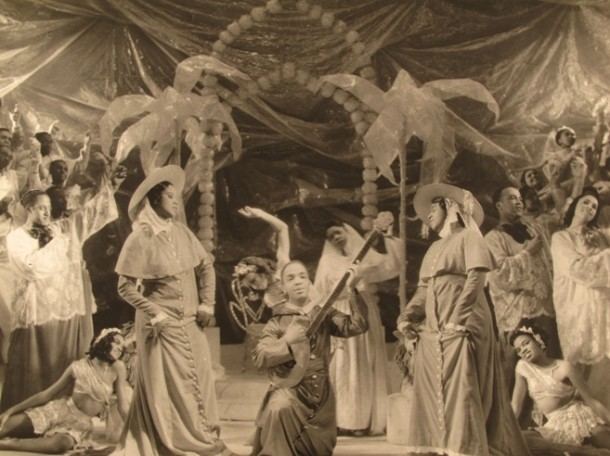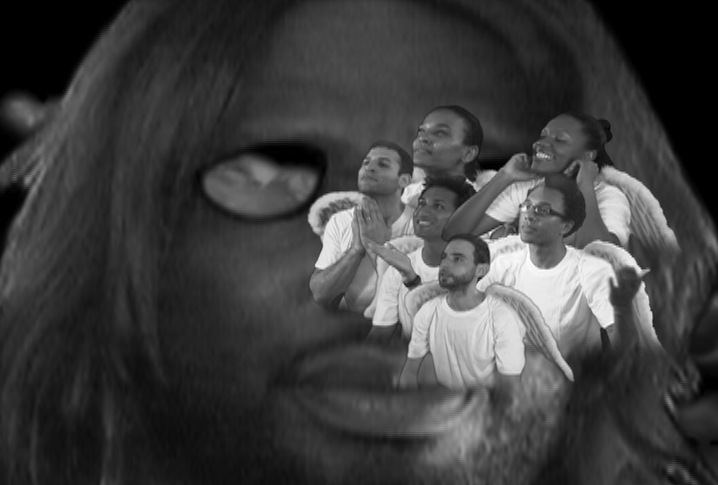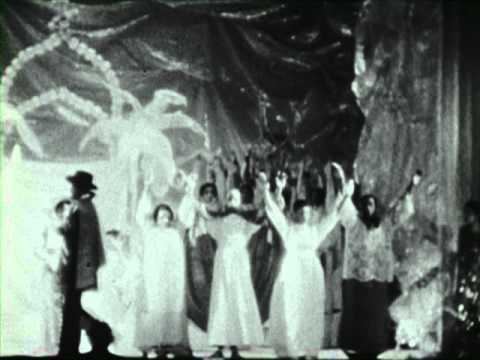Written 1928 Language English | First performance 20 May 1933 | |
Similar The Mother of Us All, Antony and Cleopatra, Porgy and Bess, Treemonisha, Einstein on the Beach | ||
Virgil thomson and luciano chessa s four saints in three acts with opera parall le
Four Saints in Three Acts is an opera by American composer Virgil Thomson with a libretto by Gertrude Stein. Written in 1927-8, it contains about 20 saints, and is in at least four acts. It was ground breaking for form, content, and its all-black cast, with singers directed by Eva Jessye, a prominent black choral director, and supported by her choir.
Contents
- Virgil thomson and luciano chessa s four saints in three acts with opera parall le
- Four saints in three acts 1934
- Synopsis
- Cast
- Productions
- References

Thomson suggested the topic, and the libretto as delivered can be read in Stein's collected works. The opera features two 16th-century Spanish saints—the former mercenary Ignatius of Loyola and the mystic Teresa of Avila—as well as their colleagues, real and imagined: St. Plan, St. Settlement, St. Plot, St. Chavez, etc. Thomson decided to divide St. Teresa's role between two singers, "St. Teresa I" and "St. Teresa II", and added the master and mistress of ceremonies (Compère and Commère—literally, the "godparents") to sing Stein's stage directions.

Four saints in three acts 1934
Synopsis

After the chorus sings a prelude, the first act takes place at the Ávila cathedral; it is titled "St. Teresa half indoors and half out of doors". Act two, "Might it be mountains if it were not Barcelona", involves a telescope and glimpses of a heavenly mansion. Act three, "St. Ignatius and one of two literally" is a picnic and contains Ignatius' famous aria "Pigeons on the grass alas". It ends with a tango-like ballet. The brief fourth act ("The sisters and saints reassembled and re-enacting why they went away to stay") is set at the garden of a monastery. Before the curtain falls the Compère announces "Last act", and the chorus replies "Which is a fact".
Cast
The cast of the original production included:

Productions

After its premiere February 7, 1934, at the Wadsworth Atheneum in Hartford, Connecticut, Four Saints in Three Acts opened on Broadway at the 44th Street Theatre February 20, 1934. The opera was notable in defying many traditional aspects of opera. Stein's libretto focused more on an affinity for the sounds of words than on presenting a narrative. Thomson's music was unconventional in its very simplicity. Eva Jessye, a black music pioneer in New York, directed the singers and her choir in the production. The production was directed by John Houseman, who was 31 and who had only recently turned his attention to theater after a career as a speculator in the international grain market.

The sets of the first production, designed by artist Florine Stettheimer, included such things as cellophane backdrops, and the costumes (also Stettheimer's) were of colorful lace, silk and taffeta. Frederick Ashton provided the choreography (after George Balanchine turned down the job).
Also considered unusual was the portrayal of the European saints by an all-black cast, for which there was no precedent in American history. These unconventional elements led to a successful and well-received first production. While critics were divided, audiences accepted the fantasy world created by the singers, who vividly conveyed the words and melodies given to their saintly characters.
The opera would be performed later as a concert oratorio, as in the 1942 and 1947 radio broadcasts. Stage performances were produced in 1952 and 1973. In 1981, a New York concert version was performed for Thomson's eighty-fifth birthday celebration. For this performance, Betty Allen, Gwendolyn Bradley, William Brown, Clamma Dale, Benjamin Matthews, Florence Quivar and Arthur Thompson sang the principal parts.
There have also been stagings by Robert Wilson and the choreographer Mark Morris, who created a dance piece for it.
